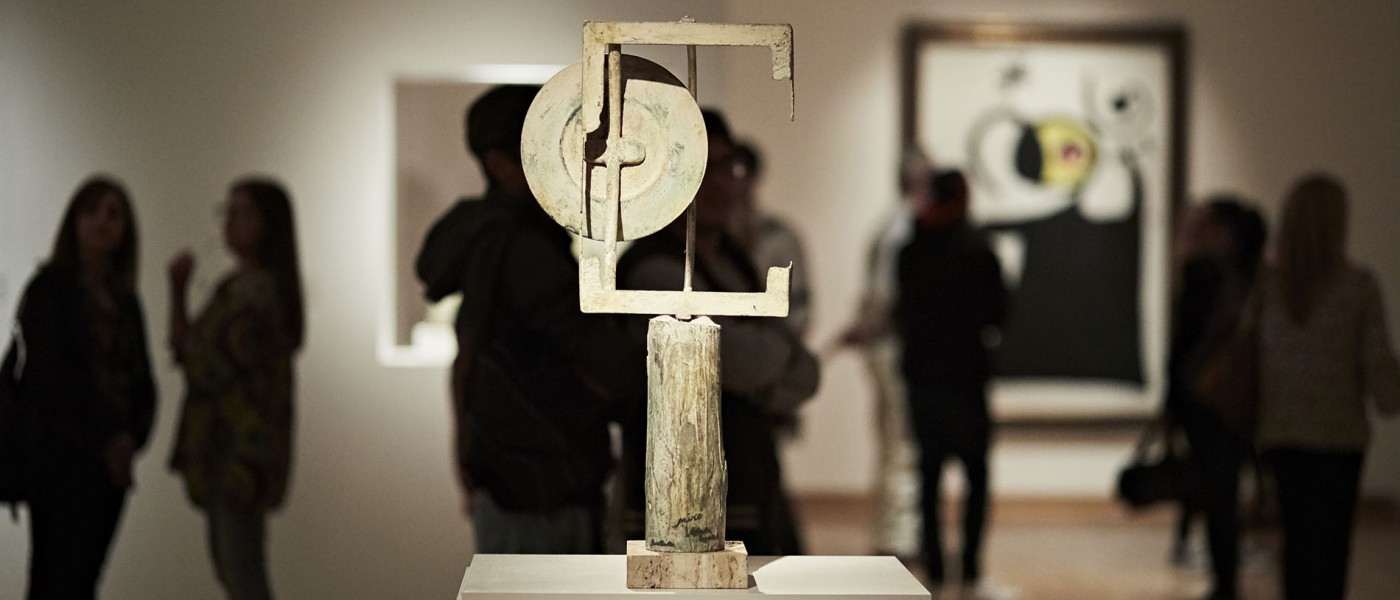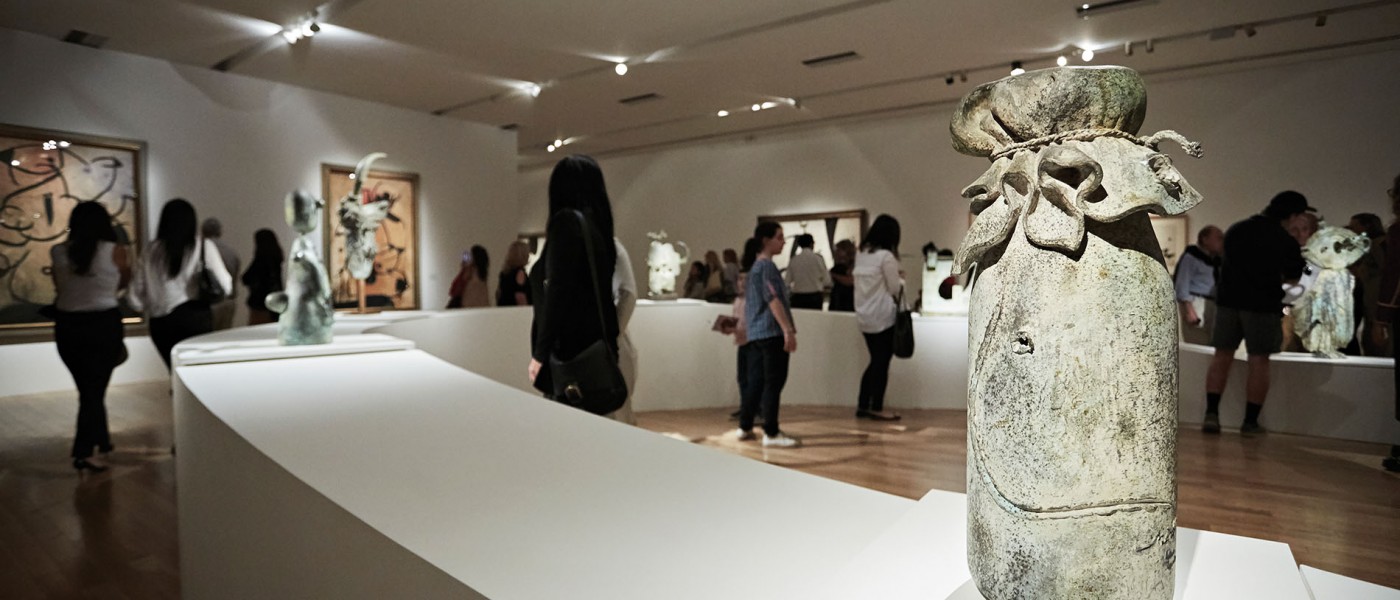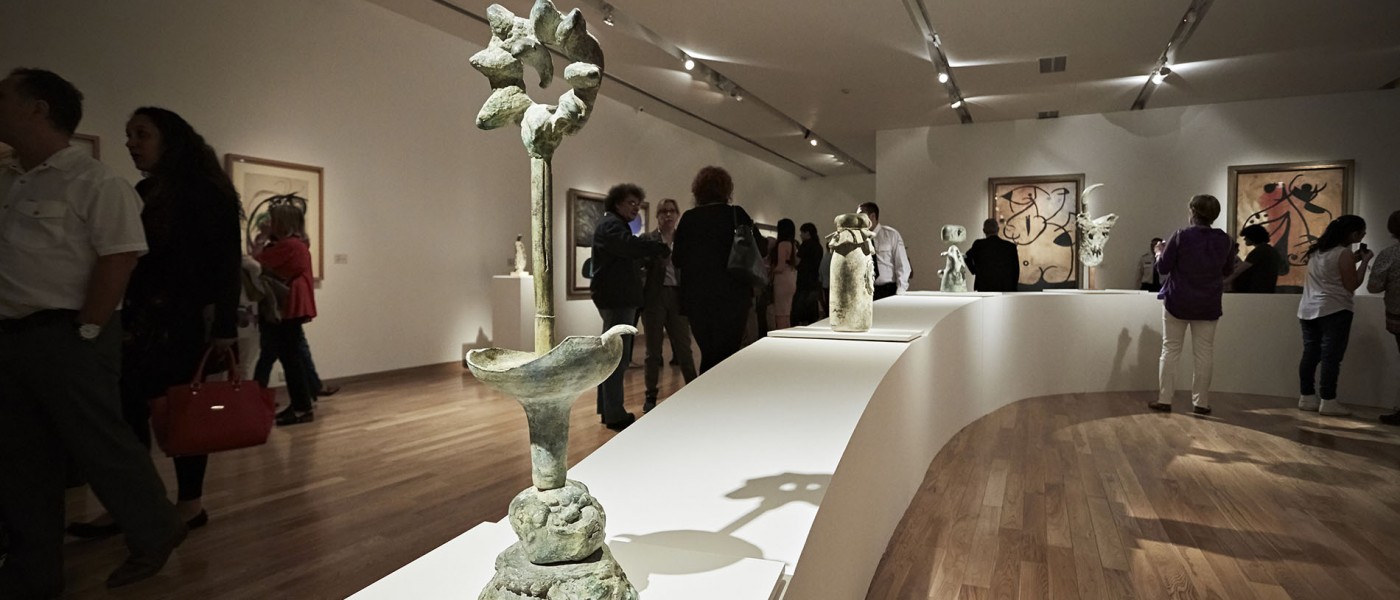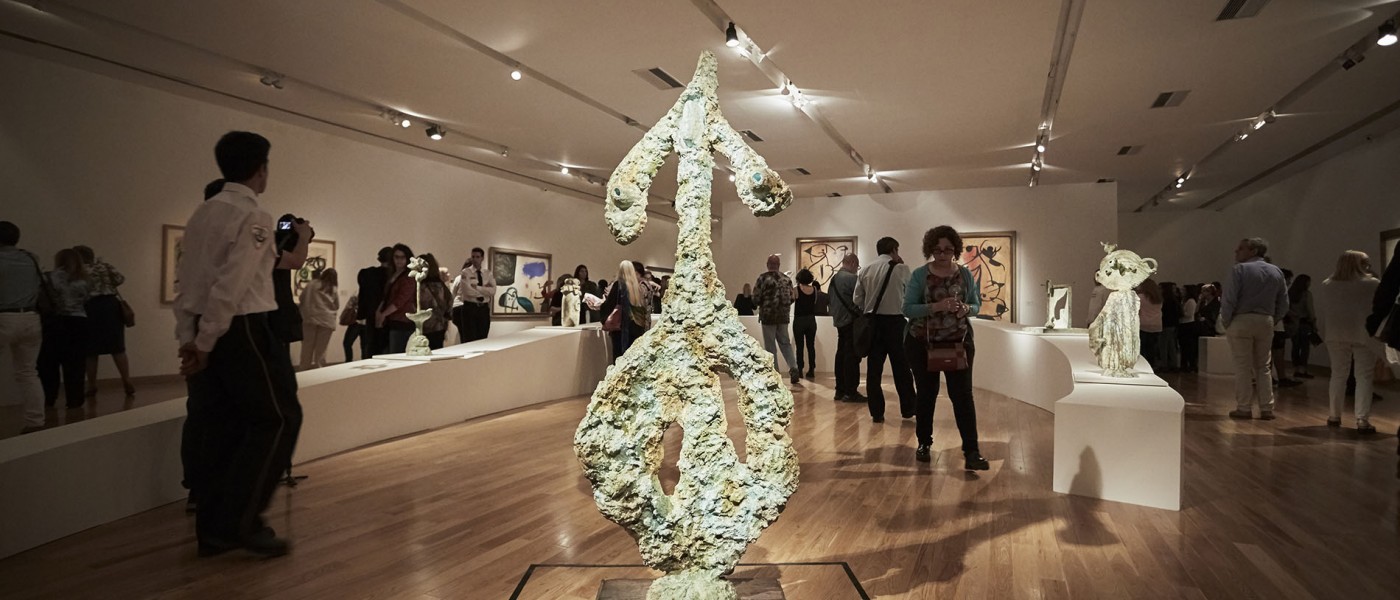Miró: the Experience of Seeing focuses on the work of Catalan artist Joan Miró (1893-1983) in the last two decades of his career. The exhibition features fifty works created by Miró between 1963 and 1981, which are part of the collection of the Reina Sofía National Museum and Art Centre of Spain, curated by Carmen Fernández Aparicio and Belén Galán Martín, under the direction of Manuel Borja-Villel and Rosario Peiró.
In the mid 1950s Miró, who since the 1920s had played a central role in the modern art scene associated to the Parisian avant-garde circles, began an introspective process in which he achieved the utmost simplification of his universe. In 1956, the artist moved to his new studio in Son Abrines, Mallorca, designed by his friend Josep Luis Sert. In this home- workshop he brought together his whole production for the first time, which gave him the opportunity to review and redefine his entire work. At the time, any casual or random motif such as a stain, a drop, a footprint, an encountered object or a natural element set him off to recreate a frequent trope in his work: the representation of nature and the human figure. “Miró goes beyond reality as a referent to transform it into matter and sign, and builds an essential symbolic language that he uses to address plastic problems”, states the curatorial text accompanying the show.
The exhibition Miró: the Experience of Seeing makes it possible to approach this renovation of his painting in which the artist intensifies the direct work on the canvas with the use of large formats that have an impact on the possibilities of the gesture and the qualities of the materials. He thus moves towards a simplification of both the definition of the form and the use of colour to make “figures look even more human and lively than their representation with all the details”, as pointed out by the artist himself in 1959.




